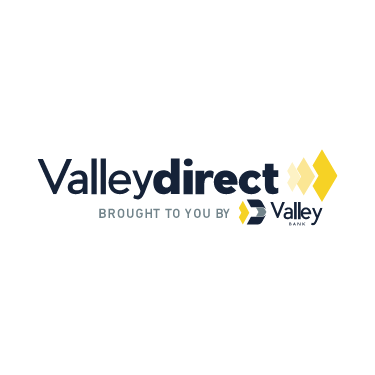Saving money is a crucial step towards achieving our financial goals. Knowing how much to save, however, can be a bit tricky. Coming up with a savings plan can be a bit tricky since this depends on many things.
A 20-year-old and a 50-year-old look at savings differently, but fortunately, there are guidelines agreed upon by multiple financial experts that you can follow to ease the burden of such financial decisions.
In this article, we will be looking at the different savings strategies everyone can follow – from millennials to retirees and everyone in between, regardless of whether you’re saving for a down payment or early retirement.
Average Retirement Savings by Age Group
Saving for retirement is important. Having an indicative figure of how much you should have saved up by a certain age can help you understand if you’re behind, ahead, or have managed to save the right amount.
Fortunately, experts have agreed on how much we should have ideally saved up, depending on our yearly income.
Using your yearly income as a measuring stick of sorts, you can ensure that you will continue to enjoy the same lifestyle as you are doing now.
Keep in mind that what this also means is that if you want to be doing extra things that you are not doing now, say taking multiple vacations a year, you need to save more.
The ideal savings for your retirement should be as follows:
| Age | Savings Goal |
| 30 | 1 years’ income saved |
| 40 | 3 years’ income saved |
| 50 | 5 years’ income saved |
| 60 | 7 years’ income saved |
| 70 | 9 years’ income saved |
| 80 | 11 years’ income saved |
Average Saving Percentages by Age
It can be tricky to determine how much money you should be saving. We all have different combinations of incomes and expenses, and arbitrary numbers are not very helpful.
It’s best to tackle this by looking at your expenses. Are they reasonable, or should you start thinking about increasing or supplementing your income to make sure you can keep up with bills while setting something aside?
To this end, we will be looking at the percentage of a year’s worth of expenses you should aim at saving by your age to give you a better idea of how to plan your retirement.
| By Age | % of Expenses Saved |
| 25 | 30% |
| 30 | 150% |
| 35 | 400% |
| 40 | 600% |
| 42 | 800% |
| 50 | 1000% |
| 55 | 1200% |
| 60 | 1500% |
| 65 | 2000% |
With 2000% of yearly expenses saved, you are covered for 20 years worth of expenses (or 240 months of expenses) by 65.
You’ll have a good savings strategy here with healthy interest rates that accumulate over the years, providing you with a boost in the savings rate.
Savings should also be held in an account of a bank that is a member of FDIC to ensure that there are no losses to the savings accumulated.
Saving Categories
Before you start on this endeavor to saving money, it is important to know why you’re saving money. While we all save money for different things, there are a few categories that apply to all. Understanding what these are can help you make sure that you are covering all of your bases.
Emergency Fund
Think of your emergency fund as money that is going to get you through a rough patch. Most experts recommend a rule of thumb of having between 3 to 6 months’ worth of expenses stashed in your emergency savings bank account.
There are several different expenses to consider holding in your emergency fund. They will largely depend on your situation, so there is no one size fits all criteria.
Common Expenses to Save for in Your Emergency Fund:
- Housing
- Transport
- Food
- Insurance
- Utilities
- Household expenses
- Payments (such as credit card, loans)
These expenses are considered standard across the board. Of course, you might own the space in which you live, in which case you technically don’t need to account for it.
While many experts put a figure to each of these expenses, you should get the actual figures from your monthly budget. These figures can vary wildly, so it’s far better to understand your expenses than go by a general figure. Or worse – an average.
One other expense you might want to consider here is up-skilling or cross-skilling. The pandemic has been challenging for many of us, with entire industries grinding to a halt.
Having a stash of funds purposefully saved to learn a new skill can help you quickly transition into a new job should everything else fails. We’ll also cover why creating multiple income revenue streams is important, and cross-skilling is one thing that can definitely come in handy here.
Emergency fund savings should be held in a highly liquid account, which means that the money should be easily accessible. Keeping your emergency fund in an account that matures in 3 years or an asset that might take some time to liquidate won’t be very useful.
Retirement
While the emergency fund discussed above will largely depend on your current budget, retirement savings depend on your income.
By basing your retirement savings on your income, you can ensure that you will continue to enjoy the same quality of life or as close to it as possible.
Another factor that you need to consider here is the age at which you would like to retire.
You should also consider what you would like to do once you retire – whether you would like to travel the world or take up gardening as this can have a big impact on how much money you need to save.
Children
If you have kids, saving for their future might be a good idea. With college expenses being one of the biggest financial hurdles many young adults face today, the sooner you start setting money aside for that, the better.
This fund can also allow you to handle unexpected expenses and emergencies that life might throw your way.
Types of Saving Accounts
In this section, we’ll look at different types of accounts you can leverage for your savings. Savings accounts come in all shapes and sizes and are typically useful for different kinds of savings.
Understanding what these are can help you make sure that you get the best bang for your buck without losing any potential interest.
Money Market Account
Best For: Short-term goals
Think of a Money Market Account, also known as MMA, as a hybrid account that sits somewhere between a checking account and a savings account. MMAs typically earn interest and might also include a debit card and check writing abilities.
Like regular savings accounts, withdrawals are typically limited to six per month due to the old Regulation D.
However, many banks and credit unions have started to remove this limitation since the Federal Reserve Board deleted it in April 2020.
Learn More:
Savings Account
Best For: Emergency Fund and Short-term goals
A savings account will generally have a higher interest rate than an MMA account. However, this can vary from one bank to another.
There are more restrictions on a savings account than there are on an MMA account.
Still, the higher interest rate should make up for it. After all, you need to put a few barriers between you and the money to make sure you don’t spend it unless you need to – without getting punished for it.
Learn More:
High-Yield Savings Account
Best For: Emergency Fund and Short-term goals
A High-Yield Savings Account works like a regular savings account – but offers a better APY rate.
In most cases, you’ll find high-yield savings accounts at online banks can offer better rates since they have fewer overheads than traditional banks.
You’ll need to give up on face-to-face interaction with your bank, something that you probably learned to do anyway during the coronavirus. In return, you’ll be able to get a better rate.
Learn More:
CD (Certificate of Deposit)
Best For: Medium to Long term goals
A CD, short for Certificate of Deposit, is a savings account that has a pre-set maturity date.
Generally speaking, you’ll need to put a sum of money into the CD (also called principal amount), which you cannot withdraw until the CD reaches the maturity date. These range from three months to 5 years or more, with longer CDs earning more.
You cannot make contributions to a CD – only the principal sits there. CDs have high APY rates, which in some cases go over the 1.50% mark.
Early withdrawals will incur a penalty that can eat away the APY profit you make – and even some of your principal.
Because of how CDs work, they require some advanced planning and are best used for savings that have a defined date.
Here, you might also want to consider building a CD ladder.
Learn More:
IRA (Individual Retirement Account)
Best For: Retirement
IRA accounts are a special type of accounts used to save for your retirement fund. They are different type of IRA accounts available including:
- Roth IRA
- Traditional IRA
- SEP IRA
- SIMPLE IRA
The type of IRA account that you can open will largely depend on your income and whether you have a retirement plan with a company match or not.
These will also determine if contributions made to the account are tax-deductible or not.
It is also worth keeping in mind that early withdrawals (usually defined as any withdrawals before the account holder reaches 59.5 years) may incur a penalty.
Early withdrawals might also be subject to taxation, potentially making early withdrawals very expensive.
Investment Account (Stocks, Bonds, Options)
Best For: Medium to long term goals
An investment account can yield far better returns than any other type of savings account, but there is a catch – you can also lose all of your savings.
Unless you understand how the stock market and complex financial assets behave, you should be very careful about handling the investment yourself.
You might want to consider speaking to an investment or brokerage firm or financial advisors or using a Robo-advisor to help you (as much as possible) pick suitable investments.
The important thing here is to understand the risk you’re assuming and make sure you don’t go over your risk tolerance.
Regardless of the type of account you choose, make sure it's NCUA or FDIC insured. The insurance applies to all accounts except investment accounts which are never insured due to their volatility.
How To Manage Your Savings
If you’re coming up short on your savings goals, do not panic, there are different ways to manage the shortfall.
Step 1: Make a budget.
Budgeting is one of the most critical personal finance exercises when it comes to our ability to save money.
Make sure you include all your monthly expenses as accurately as possible. There are several excellent software solutions to connect to your bank account to automate much of the process.
If things look right, consider what you can live without; many of us typically have some unnecessary expenses that we could give up.
Step 2: Reduce debts.
Having debts to pay off can seriously hinder you from saving money, even more so if it’s an expensive type such as credit card debt.
Try to emphasize paying off lenders by using the snowball effect to pay off as much debt as quickly as possible.
Step 3: Add income streams.
If your living expenses are not letting you meet your savings target, you might want to look into adding income streams.
From taking up a side gig to launching a side hustle, there are different ways to help you increase the amount of money in a month to increase your savings rate.







No comments yet. Add your own